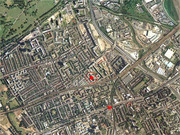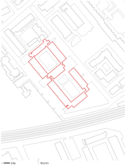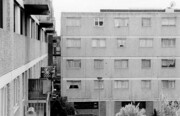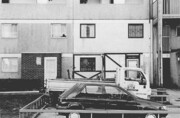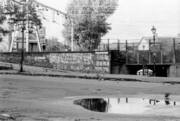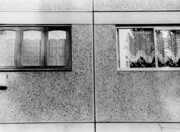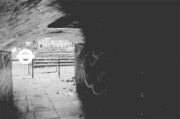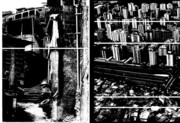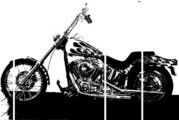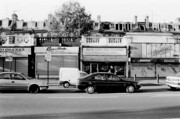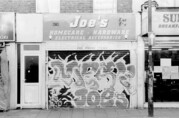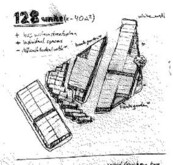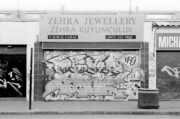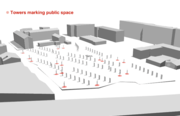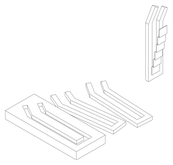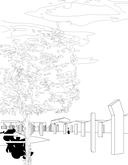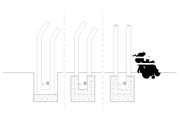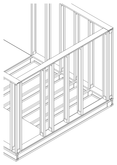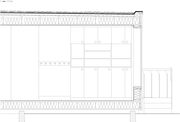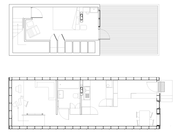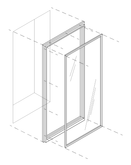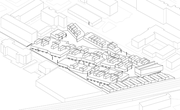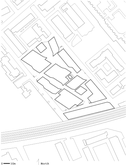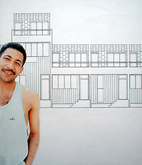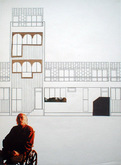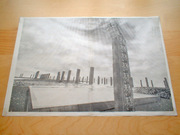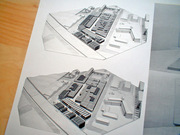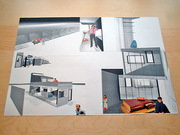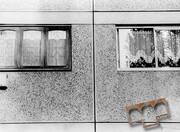Bow Settlement
Site location
The Tredgar Estate
South of the site runs a busy railtrack which can be crossed through a small pedestrian tunnel to reach Bow Tube Station further down south. The Tube station is located on Bow road, the main road in the area.
To the north there is Victoria park, but the site is surrounded by infrastructure, social housing and light industry. There is a variety of typologies in the area, from tower blocks through pitched-roof slab blocks to traditional mews houses. Most of it seems to have been build after the war.
Site documentation
The reinforcement bars in the concrete were placed to close to the surface of the concrete. This makes it possible for water to penetrate the concrete and corrode the steel, corroding steel expands and cracks the concrete making it structurally unsound.
Deck access tends to be problematic, the large structural elements obscuring any view from the opposite sides of the courtyard makes matters even worse.
The stairs wind their way up a separate concrete tower, forcing you to turn many corners on your way up. There is no way of seeing what lies behind each corner. Since there are almost no windows no one can see what happens to you inside the stair towers. The situation is not improved by the soundproof concrete.
Brief
Affordable Housing
The Circle 33 housing association and The architectural foundation organised a student competition Accomodating Change.
We intend this competition to act as an inspiration for student architects and designers: not only attracting them to the field of affordable housing (a somewhat neglected area of study in architecture schools) but also to ensure that professionalism and design skills are developed by the next generation. The subject is wide-ranging and offers a unique opportunity for students to challenge assumptions as to what makes for good housing design, as well as contributing fresh ideas for the future. - Jane Blom Cooper, Circle 33
In addition to this brief our tutor David Grandorge wanted us to regard the existing decaying buildings as demolished
Concept
Manifesto
From the start of this project it was clear that we were going to replace the existing buildings. These buildings did themselves replace something not to long ago. I was very influenced by this condition, time and change soon became the focus of the project. Initially the street patterns of medieval cities and temporary buildings like tents and sheds generated the layout and typology. Then the state of housing prices ,issues of ownership, valuation of culture, alternative economy and marginal groups pushed the project towards a self build system.
Manageable materials with an ability to change and accept addons was crucial. The collected evidence shows that people want to customise their environment, the city is full of marks. This leaves the architect in a problematic position, what level of control should be applied. The metafor of a Harley Davidson motorcycle helped me, it is a finished product fully designed and fully (maybe not) functional. Yet most of them are customized, sometimes to an almost undetectable degree, sometimes very radically. Importantly it is always clear that it is a Harley Davidson, no matter how much the design has changed. This is possible thought a few distict design features at the core of the product — for example the engine — and an established — but very diverse — culture surrounding it. Considering the previous thoughts on change and culture, an architecture able to preserve its identity and integrity after years of (ab)use and change is the obvious goal. The problem was now to design a strong, simple and durable architecture and to establish a culture with the will and ability to build.
Service towers
Concrete memory & simple mass
First of all the existing buildings are demolished, some of the rubble is kept on site in a big mountain of junk. Then the services are dug, pipes connected to mains, cables laid into the ground. At the same time, work starts on the retaining wall surrounding most of the site a 600mm wall raising the site just slightly. Slowly small 3m high, 200mm wide and 700mm long concrete towers start appearing cast in situ on top of the services, carrying water, waste, electricity and data behind metal panels. Soon the towers are scattered over the entire site, a glance tells you that there are two kinds. One type is straight and terminated by a small cap of metal; the other has a kink about one meter from the top. The kinked one is more rare and often breaks a rhythm or line of towers by stepping out of it.
Settling Event
It has got to be done
First of all a row of simple two story buildings are swiftly erected following the line of the rail track, a small building is built closer to the centre on the raised ground. Mature trees are planted and grass is rolled out. Lorries arrive with building material that is stored in the buildings along the rail track. The smaller building is being filled with folders and other office material, one person is seen hanging around making him or herself comfortable in the building. The final event is the arrival of caravan like living units that are placed next to the towers around the small building.
The following weekend artists, local schools and potential settlers are invited to create a temporary show. This show consists of the service towers, now modified — according to skill and ambition — into works of art. The panels covering the services can be painted changed or removed, the water, electricity and other services can be used for any type of installation.
Construction
Framework
Some of the settlers buy or rent one of the small pre-fabricated caravan houses and live in them on site during construction. Parts of the site are left undeveloped to leave room for these houses. This construction phase consist of the pouring of pier foundations, then Masonite beams — previously cut to size — are brought out from the warehouses and erected to form a structural frame around the service tower. This stage of construction is heavily supported by skilled labour, but many of the settlers save money by doing most of the work themselves.
The necessary joining details are ordered from the little site office and pulled out of the warehouses along with other elements of construction.While this is happening a larger building in constructed around the small office, equipment for heating water and distributing electricity is installed, as is an Internet server.
Typical unit
The deep narrow plan enables tighter packing along fewer streets. To achieve some level of density in a low-rise typology a tight packing on the ground is necessary.
The rainscreen is constructed from wood cut-offs, all lengths cut to the nearest multipel of 300mm.With and thickness wise the boards are allowed to vary. The facades can then be decorated by routing a motif into the wood. Templates can be borrowed from the site office. The motifs are large graphic line drawings relating to the facade the way a good tattoo relates to the human body. After routing the facade it must be painted in one color
Site plan
Process
An architecture without status
The as found qualities of the project was worked out in these drawings. Media and expression was choosen to emphazise an everyday feel.
